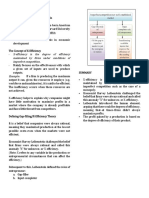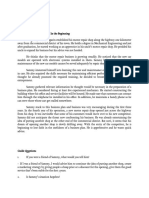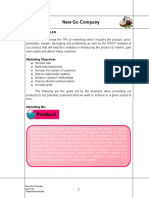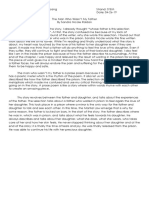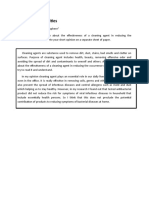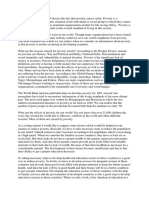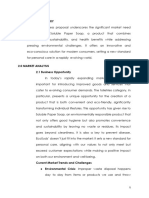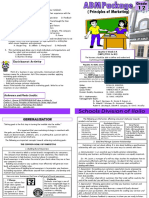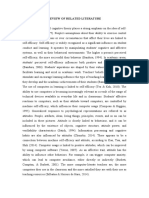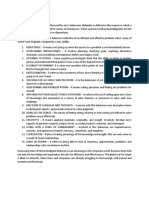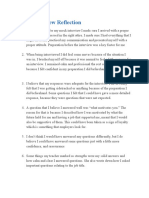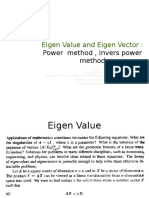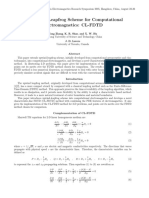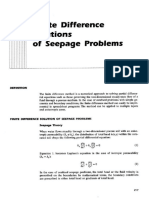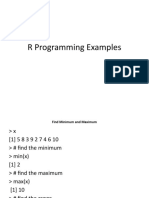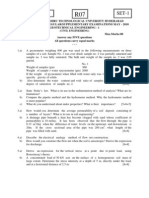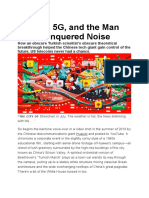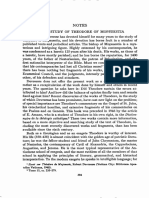Crafting
Crafting aa
Winning
Winning
Business
Business Plan
Plan
Chapter 10: Business Plan
Copyright 2002 Prentice Hall Publishing Company
�The Business Plan:
Two Essential Functions
Business plan a written summary of:
An entrepreneurs proposed business venture
Its operational and financial details
Its marketing opportunities and strategy
Its managers skills and abilities
It serves two essential functions:
Guiding the company by charting its future course and
defining its strategy for following it
Attracting lenders and investors who will provide needed
capital
Chapter 10: Business Plan
Copyright 2002 Prentice Hall Publishing Company
�Purposes of a Business
Plan
Development tool for organizational founders
Vision and mission clarification
Planning and evaluation guidelines
Tool for securing financial resources
Tool for guiding growth
Chapter 10: Business Plan
Copyright 2002 Prentice Hall Publishing Company
�Why Take the Time to
Build a Business Plan?
Although building a plan does not
guarantee success, it does increase
your chances of succeeding in
business.
A plan is like a road map that
serves as a guide on a journey
through unfamiliar, harsh, and
dangerous territory. Dont
attempt the trip without a map!
Chapter 10: Business Plan
Copyright 2002 Prentice Hall Publishing Company
�Key Elements of a Business Plan
Executive Summary
Mission Statement
Company History
Business and Industry Profile
Business Strategy
Description of Products/Services
Chapter 10: Business Plan
Copyright 2002 Prentice Hall Publishing Company
�Key Elements of a Business Plan
(continued)
Marketing Strategy
Competitor Analysis
Description of Management
Team
Plan of Operation
Forecasted Financial
Statements
Loan or Investment Proposal
Chapter 10: Business Plan
Copyright 2002 Prentice Hall Publishing Company
�Technology and Operations
Strategies for Entrepreneurs
Resources
Products
Production-Operations
Management
Strategies
Production Process
Strategies
Capacity Strategies
Layout Strategies
Work Design
Strategies
Location Strategies
Chapter 10: Business Plan
Copyright 2002 Prentice Hall Publishing Company
�Production Process
Strategies
Three Possible Choices:
Chapter 10: Business Plan
The process-focused strategy
The product-focused strategy
The repetitive-focused strategy
Copyright 2002 Prentice Hall Publishing Company
�Layout Strategies
Six Potential Layout Strategies:
Chapter 10: Business Plan
The fixed position
The process-oriented layout
The office layout
The retail-service layout
The warehouse layout
The product-oriented layout
Copyright 2002 Prentice Hall Publishing Company
�Guidelines for Preparing
a Business Plan
Remember: No one can create your plan for you.
Potential lenders want to see financial
projections, but they are more interested in the
strategies for reaching those projections.
Show how you plan to set your business apart
from competitors; don't fall into the me too
trap.
Identify your target market, and offer evidence
that customers for your product or service exist.
Chapter 10: Business Plan
Copyright 2002 Prentice Hall Publishing Company
10
�Tips on Preparing
a Business Plan
(continued)
Make sure your plan has an attractive cover.
(First impressions are crucial.)
Rid your plan of all spelling and grammatical
errors.
Make your plan visually appealing.
Include a table of contents to allow readers to
navigate your plan easily.
Make it interesting.
Chapter 10: Business Plan
Copyright 2002 Prentice Hall Publishing Company
11
�Tips on Preparing
a Business Plan
(continued)
Your plan must prove that the business will make
money (not necessarily immediately, but
eventually).
Use spreadsheets to generate financial forecasts.
Always include cash flow projections.
Keep your plan crisp between 25 and 50
pages long.
Tell the truth always.
Chapter 10: Business Plan
Copyright 2002 Prentice Hall Publishing Company
12
�Features vs. Benefits
Feature a descriptive fact about a
product or service (an ergonomically
designed, more comfortable handle).
Benefit what a customer gains from the
product or service feature (fewer
problems with carpal tunnel syndrome
and increased productivity).
Chapter 10: Business Plan
Copyright 2002 Prentice Hall Publishing Company
13
�A Plan Must Pass Three Tests
The Reality Test - proving that:
a market really does exist for your product or service.
you can actually build or provide it for the cost estimates
in the plan.
The Competitive Test - evaluates:
a companys position relative to its customers.
managements ability to create a company that will gain
an edge over its rivals.
The Value Test proving that:
a venture offers investors or lenders an attractive rate of
return or a high probability of repayment.
Chapter 10: Business Plan
Copyright 2002 Prentice Hall Publishing Company
14
�Presenting the Plan
Demonstrate enthusiasm, but dont be
overemotional.
Know your audience thoroughly.
Hook investors quickly with an up-front
explanation of the venture, its opportunities, and
its benefits to them.
Hit the highlights; focus on the details later.
Keep your presentation simple 2 or 3 major
points.
Chapter 10: Business Plan
Copyright 2002 Prentice Hall Publishing Company
15
�Presenting the Plan
(continued)
Avoid overloading your audience with
technological jargon.
Use visual aids.
Close by reinforcing the nature of the
opportunity.
Be prepared (with details) for potential
investors questions.
Follow up with every investor to whom you
make your presentation.
Chapter 10: Business Plan
Copyright 2002 Prentice Hall Publishing Company
16
�The 5 Cs of Credit
Chapter 10: Business Plan
Capital
Capacity
Collateral
Character
Conditions
Copyright 2002 Prentice Hall Publishing Company
17
�Business Planning
(Recap)
What the Business Plan Should Include:
Executive
Summary
Analysis
of Opportunity
Analysis
of Context
Description
Financial
Data and Projections
Supporting
Chapter 10: Business Plan
of Business
Documentation
Copyright 2002 Prentice Hall Publishing Company
18
�Writing a Successful
Business Plan
10 Characteristics:
1. Clear, realistic financial projections
2. Detailed market research
3. Detailed competitor research
4. Descriptions of key decision makers
5. Thorough summary
6. Proof of vision
7. Good formatting and clear writing
8. Brief and concise
9. Writing that demonstrates the importance of the bottom line
10. A plan that captures you
Chapter 10: Business Plan
Copyright 2002 Prentice Hall Publishing Company
19
